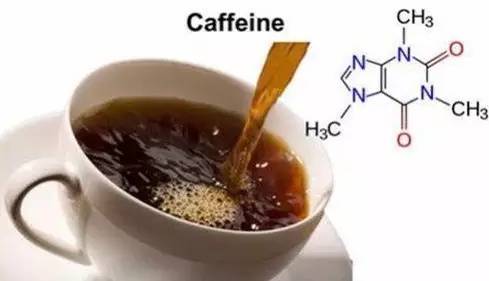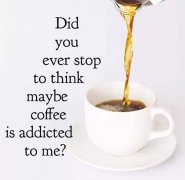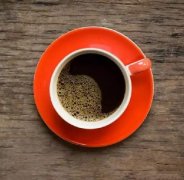Talking about Coffee: caffeine Series (2): the harm of caffeine Addiction

For professional baristas, please follow the coffee workshop (Wechat official account cafe_style)
I have heard the elder say that people who really like coffee are afraid of both bitterness and caffeine. At that time, the author was still short-sighted and was puzzled by this statement. Now I finally understand that fine coffee pursues a sense of hierarchy and a balance of sour and bitter taste. The higher the score of coffee, the more fructose, the sweeter it should be. Instant coffee and commercial grade coffee are often mixed with cheap bean robusta, which is low in sugar and high in caffeine. However, because it has flooded the mainstream market for decades, consumers mistakenly think that coffee is just a bitter word. Suffering is not an index of appreciation, and there is no such item on the cup test paper.
Caffeine permeates life
The world consumes about 120000 tons of caffeine every year, half of which is absorbed through coffee. The rest has permeated our daily life: the hot mandarin ducks on the breakfast menu, the Chinese tea drunk in the teahouse at noon, a piece of chocolate from tea time, the coke enjoyed after gym, and even the black tea after dinner in the hotel all contain different ingredients of caffeine.
Overdose see UFO?
Caffeine was originally a natural insecticide used by tropical plants to protect themselves from moths. But humans, who are much larger than insects and have more developed brains, have been unable to extricate themselves since they accidentally learned of its refreshing effect. We are fascinated by it, not only because of the rapid pace of the city, hoping that its pharmacological effects will increase production capacity, drink too much, the body will also develop dependence, a day without drinking, you will feel headache, anxiety, fatigue and depression (withdrawal symptoms). Fortunately, the condition is much milder than that encountered by abstinent alcoholics or drug addicts.
Taking 10 grams of pure caffeine at a time can be fatal. In terms of standard coffee, this is equivalent to 100 cups. The US Food and Drug Administration (FDA) classifies caffeine as "generally safe" (generally recognised as safe) on the grounds that its per capita daily intake is 500ug. The American Academy of Psychiatric Sciences (American Psychiatric Association) defines four types of symptoms according to the scope of influence, including poisoning, caffeine-induced sleep disorders, mood disorders and others. Antony Wild mentioned in his book Coffee: A Dark History that many truck drivers in the United States encounter white light suspected to be UFO, which may be caused by visual hallucination caused by excessive caffeine consumption.
If someone asks the author, "who is not fit to drink coffee?" I would only advise friends who have high blood pressure, arrhythmia or are ready to do fine motor movements to avoid it. Coffee makers know better than anyone about the disadvantages of caffeine; colleagues brew it at the bar during peak hours and constantly taste it for guests, who can best feel the effects and inconvenience of caffeine-induced handshakes and frequent urination.
In recent years, the caffeine problem concerned by American society does not come from coffee, but from all kinds of "energy drinks". The amount of caffeine in each can is several times that of espresso. The federal government of the United States published a report in 2012 that it had received 13 deaths suspected to be related to a certain brand of energy drinks in the previous four years, but they failed because of difficulties in obtaining evidence.
Where does the caffeine in these energy drinks come from? We will continue the next issue.
Patrick Tam (owner of the boutique coffee shop Knockbox, approved barista of the American and European boutique coffee associations, CQI recognized cup tester, Cup of Excellence's first Hong Kong resident judge, www.facebook.com/Knockboxcoffee)
Important Notice :
前街咖啡 FrontStreet Coffee has moved to new addredd:
FrontStreet Coffee Address: 315,Donghua East Road,GuangZhou
Tel:020 38364473
- Prev

Talking about Coffee: caffeine Series (1): the cause of Life Saving
Professional barista communication please follow the coffee workshop (Wechat official account cafe_style) cherries are very sweet! Who put it here? If you don't claim it, you will be nationalized! After the shop closes, colleagues are used to eating at the bar. The basket of cherries is crimson, like ripe coffee fruit. As I spoke, I tried to scrape off the pectin layer with my teeth, ready to explain the various treatments of coffee.
- Next

Talking about Coffee: caffeine Series (3): the production of decaf Coffee
Professional baristas Please follow the Coffee Workshop (official Wechat account cafe_style) at the end of the last article, it was mentioned that the problem of caffeine in recent years is not fine coffee, but energy drinks (energy drinks) made with large amounts of sugar, taurine (taurine) and caffeine. At that time, the Daily Mail reported this month that a 19-year-old athlete was applying for the Royal Navy.
Related
- Beginners will see the "Coffee pull flower" guide!
- What is the difference between ice blog purified milk and ordinary milk coffee?
- Why is the Philippines the largest producer of crops in Liberia?
- For coffee extraction, should the fine powder be retained?
- How does extracted espresso fill pressed powder? How much strength does it take to press the powder?
- How to make jasmine cold extract coffee? Is the jasmine + latte good?
- Will this little toy really make the coffee taste better? How does Lily Drip affect coffee extraction?
- Will the action of slapping the filter cup also affect coffee extraction?
- What's the difference between powder-to-water ratio and powder-to-liquid ratio?
- What is the Ethiopian local species? What does it have to do with Heirloom native species?

